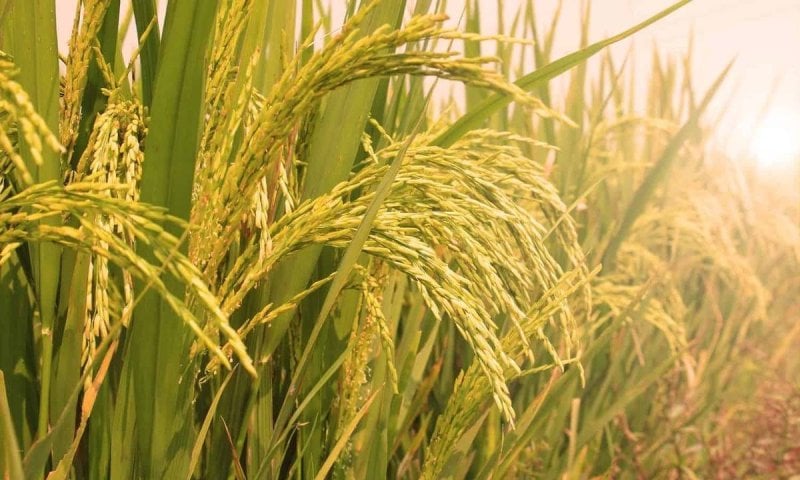Tags
Global grain prices likely to decline 6.5 per cent in 2024
But rice may buck the trend on Indian export curs, El Nino impact

Grain prices in the global market will likely decline in 2024, though rice will be an exception in view of India’s export curbs and concerns over the impact of El Nino, the World Bank and research agency BMI, a unit of Fitch Solutions, have said.
However, the World Bank Commodity Outlook said higher rice prices in 2024 are forecast to be offset by the continued decline in maize and wheat prices due to improving global grain supplies.
BMI, in its key agri-business themes for 2024, said markets will remain comparatively tight, rendering prices susceptible to upward momentum-driven runs on adverse supply-side developments.
Bumper harvests
“We forecast that the average annual price of CBOT-listed second-month corn, soyabean, and wheat futures will decline by 9.9 per cent year-on-year (yoy), 3.9 per cent y-o-y, and 5.7 per cent y-o-y in 2024, respectively, or by 6.5 per cent y-o-y if the three crops are considered on an even weighted basis,” the research agency said.
This will also mark a deceleration of the pace at which grains markets unwind the price shocks that began with the onset of the Covid-19 pandemic in 2020, with the average even-weighted price of the same three crops falling by an estimated 17.4 per cent y-o-y in 2023.
Bumper harvests in several major producers during the 2023-24 season will turn the market bearish. Russia’s wheat production is set to be another mammoth one and Brazil is forecast supply a higher volume of corn and soyabean to world markets.
“With respect to on-farm production costs, lower fuel and fertiliser prices, although both subject to upside risks over the next twelve months, will also see average grain prices lower in 2024,” BMI said.
The World Bank, said in its Commodity Outlook, that edible oils supply continues to increase, particularly soyabean oil as soyabean production is estimated to be 9 per cent higher this crop year.
Maize to slip further
Maize prices are expected to decline a further 8 per cent in 2024, in addition to the 22 per cent slide this year. “Similarly, wheat prices should decrease by about 3 per cent in 2024,” it said.
BMI said grains prices will, however, continue to rule higher than the average pre-Covid levels. “Our forecasts for average corn, soyabean, and wheat prices in 2024 still remain 30-40 per cent higher than their average prices between 2015 and 2019. In the main, this is a reflection of narrow inventories, with Covid-era stock drawdowns yet to be rebuilt,” it said.
The World Bank said in contrast, the price of rice is expected to increase 6 per cent in 2024, partly due to the threat of El Niño, policy responses from significant exporters and importers, and the geographic and market concentrations of rice production and exports.
‘Other foods’ prices
BMI said: “Looking ahead, we expect that the world market will remain taut through at least the first six months of 2024 for two principal reasons.
“Firstly, we do not anticipate the lifting of India’s rice export restrictions ahead of the general election, scheduled for April-May, in view of the potential upside risk to domestic food price inflation…,” the research agency said.
Second, the now-active El Niño event, a weather phenomenon associated with below-average rainfall across much of south-east Asia, is likely to persist until May-July 2024, it said.
Prices of “other foods,” comprising fruit, meat, poultry, and sugar, are expected to be stable in 2024 and fall slightly in 2025, the World Bank said.
Support to softs
Dwelling on El Nino, BMI said: “Considering its profound effect on agricultural soft commodity prices in 2023, we predict that the El Niño weather pattern will continue to wield considerable sway over the global soft commodities market in 2024.
“Due to the concentrated nature of global soft commodities production, we forecast that El Niño will offer increased support to soft commodities as opposed to grains.”
Another factor that could impact foodgrain prices are the global scene of biofuel consumption, primarily ethanol and biodiesel, is experiencing a substantial transformation. This trend, primarily propelled by leading agricultural markets like the US, Brazil, India, and Indonesia, is anticipated to carry significant repercussions for biofuel feedstock prices into 2024, BMI said.
Food security will likely improve over the next twelve months, caused by lower average agricultural prices and real economic growth, BMI said.
https://www.thehindubusinessline.com/economy/agri-business/global-grain-prices-likely-to-decline-65-per-cent-in-2024/article67610761.ecePublished Date: December 7, 2023






